This is the final post in a series of posts of opportunities available to you and building a better world for yourself by surviving (or thriving) during a recession and a pandemic.
Accept Government assistance
The Government is constantly changing the way it’s supporting New Zealand business owners, employers, employees and beneficiaries. This means new incentives are constantly being announced, and previous incentives may be removed or changed. Below are the main incentives currently available as at 4 April 2020. I will do my best to update as things change but it’s up to you to make sure you’re up to date with whatever incentives you want to take advantage of:
12-week wage subsidy scheme (24 March to 9 June) – for employers and business owners who can prove a minimum reduction of income from last year of 30% due to Covid-19 (e.g. compare March 2020 with March 2019 and if 30% down then eligible). Maximum 12 weeks. $585.80 per week per full-time employee (worked 20 hours or more pre Covid19) and $350 per week for part-time employee (under 20 hours). At this point, apply online and see how you go (i.e. maximum $7,029.60 for full time, and $4,200 for part time).
Tax treatment of subsidies received:
– The wage subsidy and leave payments are NOT subject to GST
– The wage subsidy and leave payments are excluded income (what this means is it’s not taxable to the extent you pay it to your employees – i.e. payment of subsidies to employees are not deductible)
– The payments made to employees ARE subject to PAYE, KiwiSaver etc. in normal way.
– If you receive a subsidy, it must be passed to the employee (employers can’t keep it)
– If you receive a subsidy for 12 weeks, you must employ (and pay that employee) for 12 weeks
– You can’t use subsidies to fund holiday pay or sick leave for employees.
Important note – because the subsidy is only available to businesses who can show a 30% drop in income compared to the same month last year, make sure you are not invoicing sales you can’t/don’t collect (i.e. you end up with bad debts). If the Governments subsidy matters to you, credit note bad sales rather than account as bad debts. It’s the sales that matter – not profit. Just be careful because from the bank’s point of view they will want to see good business behavior (they’re not going to lend to poorly managed business).
If you haven’t applied already, apply now:
– Application for employers of staff or shareholder employees of private companies – https://services.workandincome.govt.nz/ess/employer_applications/new
– Application for self-employed – https://services.workandincome.govt.nz/ess/trader_applications/new
Wage Subsidy Extension (10 June to 1 September 2020) – for employers and business owners who can prove a 40% or more reduction of income for a continuous 30 day period sometime in the last 40 days prior to applying. For example, you apply on 29 June 2020. Your 40% decline in revenue must be for a continuous 30 day period between 19 May and 28 June 2020.
Apply here:
– Application for employers of staff or shareholder employees of private companies – https://www.workandincome.govt.nz/online-services/covid-19/apply-checklist-wage-subsidy-extension-employers.html
– Application for self-employed – https://www.workandincome.govt.nz/online-services/covid-19/apply-checklist-wage-subsidy-extension-self-employed.html
Government Small Business Cashflow Loan (12 May to 31 December 2023) – Organisations and small to medium businesses (with 50 or fewer employees), including sole traders and the self-employed, may be eligible for a one-off loan with a term of 5 years if they have been adversely affected by COVID-19. Eligible businesses and organisations are entitled to a one-off loan for core operating costs and capital expenditure. The maximum amount loaned is $10,000 plus $1,800 per full-time-equivalent employee. The annual interest rate will be 3% beginning from the date of the loan being provided. Interest will not be charged if the loan is fully paid back within two years. Application is made via IRD website using myIR.
Business Finance Guarantee Scheme – Businesses with annual revenue between $250,000 and $80 million can apply to their banks for loans up to $500,000, for up to three years. The Government is guaranteeing 80% of the risk, while the banks are covering the remaining 20%. A normal lending process will be followed by the banks, which will make the lending decisions. Further details can be found on the banks’ websites. Loans will be available under the scheme until 30 September 2020.
Debt hibernation for insolvent companies – If you were solvent before Covid19 showed up, trade under a company/trust or partnership, and become insolvent due to the impact of Covid19, you will have the option of placing existing debts into hibernation until you are able to start trading normally again. At this stage it looks like the ‘safe harbour’ option for insolvency will be subject to majority of creditors approval, and if approved, be for a period of six months. While not law yet, the provisions will be retrospective.
Planning opportunities: If you can take advantage of any Government support on offer, take it … even if you may end up not needing it. You can always return it later – better to have it and not need it than need it and not have it (due to the Government changing the criteria later and/or taking it away).
Having discussed numerous options for surviving a pandemic and recession, I’m following this post up in the coming week with a piece about reinventing you and your business so (i) you can get through this rainy day better; and (ii) you’ll be much better prepared for the next rainy day. In the meantime, do what you can to help yourself and others. And don’t be ashamed or afraid to ask for help.
